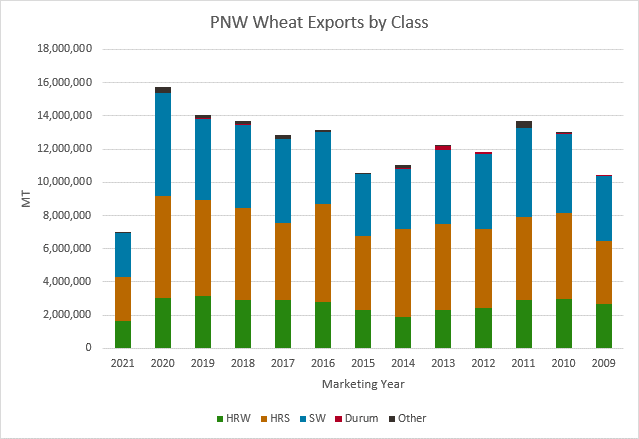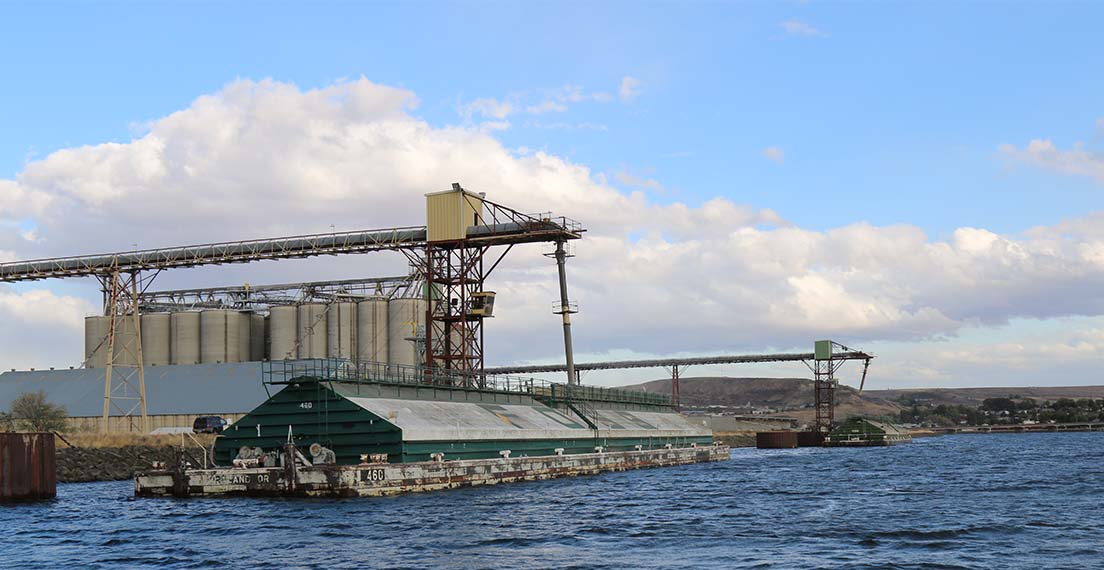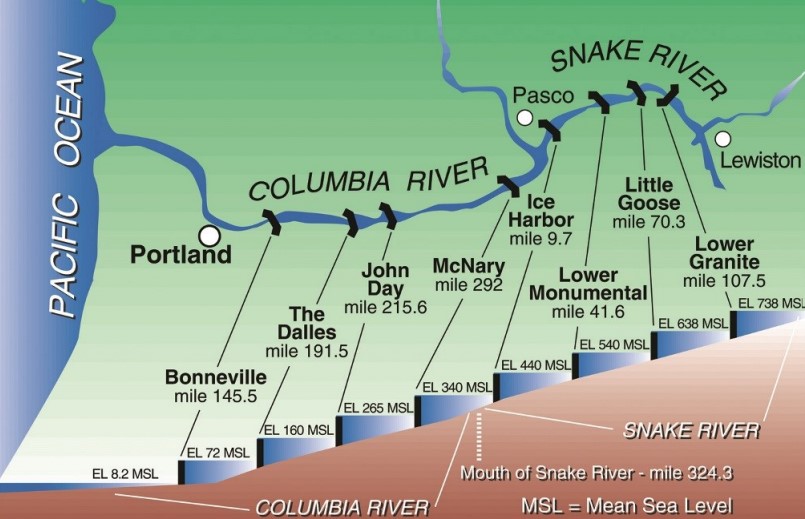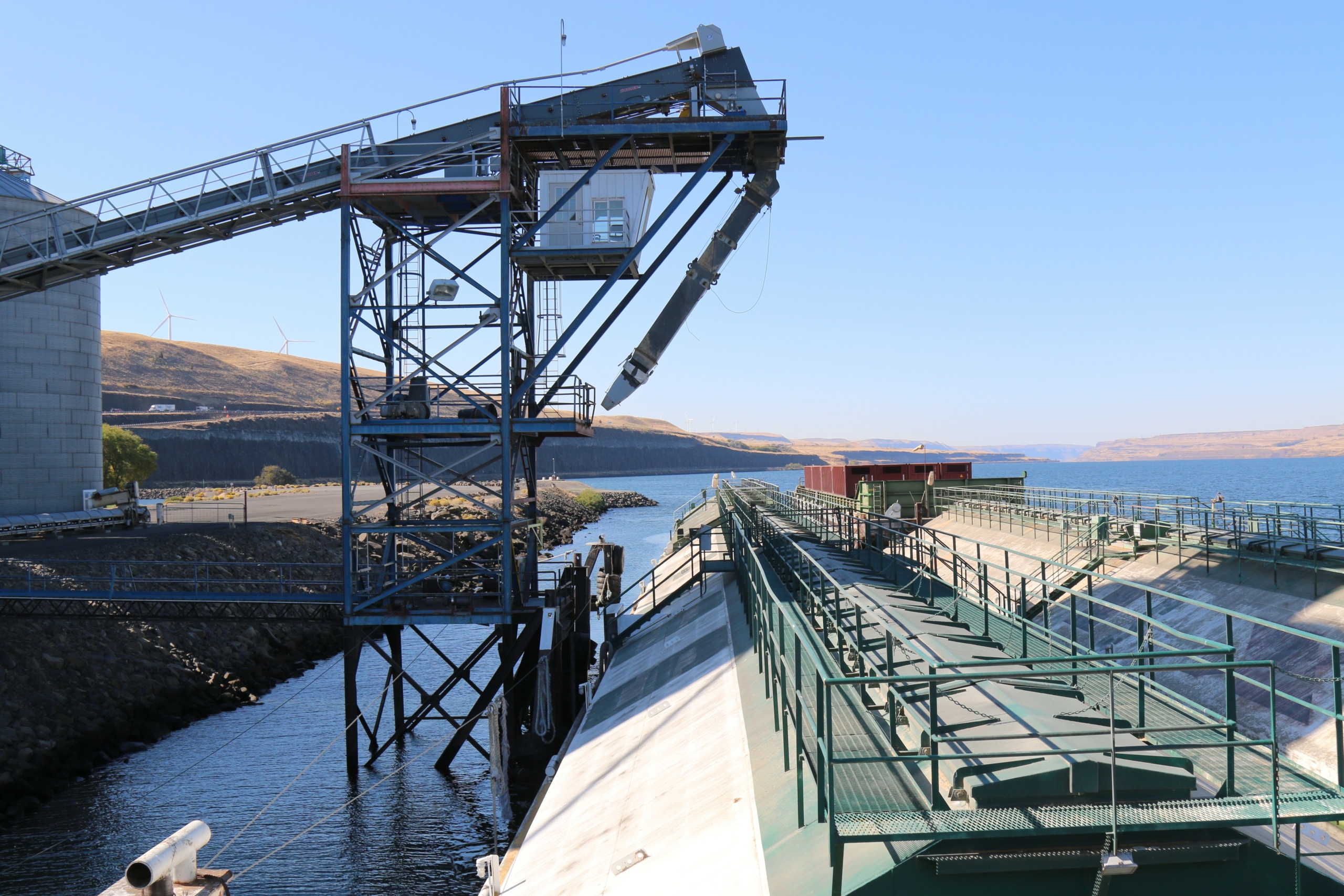Facts About U.S. Wheat Exports and the Columbia Snake River System
The Columbia Snake River System is the network of federal dams and locks on the Columbia River and connected water bodies, including the Snake River. This system enables grain barges to carry wheat 360 miles from Lewiston, Idaho, to export elevators as far west as Longview, Wash.
In marketing years 2019/20 and 2020/21, more than 55% of all U.S. wheat exports* moved through the system by barge or rail. Of the more than 15.0 million metric tons (MMT) of U.S. wheat exported from Pacific Northwest (PNW) export elevators each of those years, an estimated 4.6 MMT arrived by barge.
In addition, an estimated 10% of total annual U.S. wheat exports each year passes through the four locks and dams on the Snake River between Lewiston, the most inland port in the nation, and its confluence with the Columbia River.

Four Classes of Wheat are exported from PNW export elevators after arriving through the Columbia Snake River System by barge and rail. Source: Federal Grain Inspection Service.
Grain Superhighway
In October 2019, U.S. Wheat Associates (USW) Market Analyst Michael Anderson shared his experience aboard a four-tow barge moving wheat from Lewiston to western export elevators on the deep-water Columbia River. Eight locks on the system allow barges to safely navigate the nearly 222-meter drop in elevation over that distance.
“The Columbia Snake River System is a superhighway of sorts for moving wheat and other agricultural products from farm to market,” Anderson said. “The ability to move such a large volume of grain efficiently makes the river system a very cost-effective and “green” logistical option. The Army Corps of Engineers maintains the lock system. And its history goes back to the 1930s when President Franklin Roosevelt personally inaugurated Bonneville, the first of the eight dams and locks east of Portland.”

From Way Up River. Wheat is loaded onto a barge tow on the Snake River, the eastern segment of the Columbia Snake River System, near the start of its journey to export.
Earlier in 2019, Anderson noted why barging represents an essential part of the Pacific Northwest (PNW) wheat export supply system, including rail and trucking.
Barge Efficiency
“The rivers can move more volume at once, with greater fuel efficiency,” he wrote. “One barge can carry the same amount of wheat as 35 rail cars or 134 trucks. A barge tow can carry more than one 100-unit train or 538 trucks. And one barge can move a ton of wheat 647 miles per gallon while a truck can only move a ton of wheat 145 miles per gallon.”
The Pacific Northwest Waterways Association (PNWA) also reports that barging is a very safe way to move cargo, with fewer injuries, fatalities and accidental spills than other transportation options.
Economic Value
This system transports four classes of U.S. wheat grown by dependable farmers in 10 states. In addition, some of that wheat and other crops for export markets are irrigated with water from the system. And the dams on the Columbia Snake River System generate 90% of the renewable electric power in the PNW.

Eight Steps Down. Lock and dam systems on the Columbia Snake River System allow barges to efficiently and safely navigate the 222-meter elevation change from Lewiston, Idaho, to export elevators as far west as Longview, Wash.
A Necessary Link
The Columbia Snake River System and other major U.S. river systems truly connect the United States to its trading partners. The river system keeps U.S. wheat competitive by moving higher volumes more efficiently. USW, its state wheat commission members, wheat associations and supply chain stakeholders in the tri-state region of Idaho, Oregon and Washington all support the Columbia Snake River System and will work to see that it continues working for wheat buyers around the world.
* Source: Federal Grain Inspection Service


